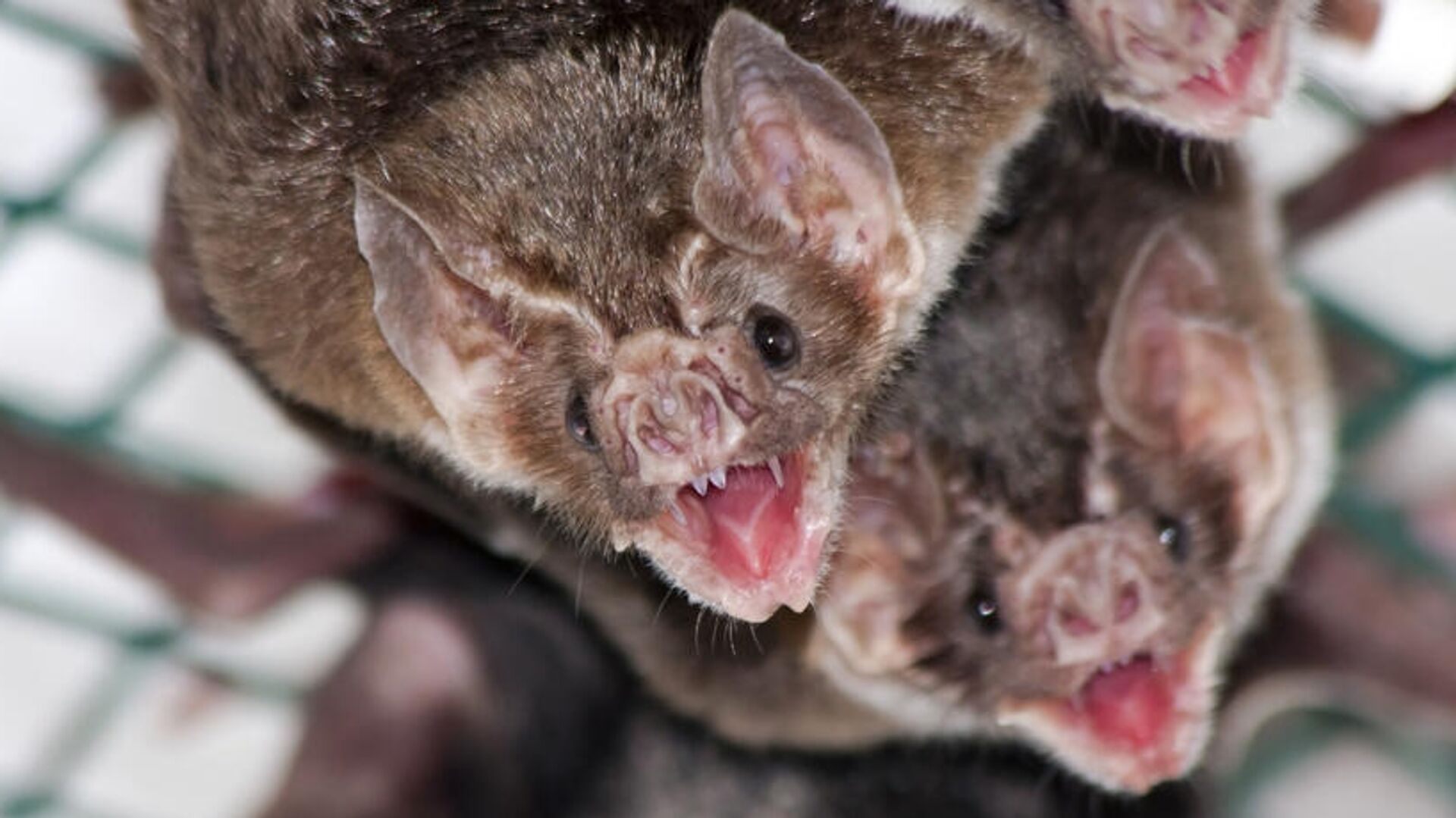New Study Claims COVID-19 Did Not Originate in a Chinese Cave
Subscribe
The world is in the second year of the coronavirus pandemic, but the origins of the disease, which according to Johns Hopkins University has left nearly 5 million people dead, still remain a mystery, with scientists offering different explanations, including one which suggests that the virus appeared due to a leak in a Chinese laboratory.
SARS-CoV-2 did not originate in a cave in the Chinese province of Yunnan, claims a group of French scientists. Last year, a group of Indian researchers published an article, in which they suggested that the Mojiang cave could be the birthplace of the novel coronavirus, as a virus similar to SARS-CoV-2 was discovered in Mojiang in 2012.
At the time, six miners came down with a severe respiratory disease after cleaning the cave of bat faeces in order to mine copper. The men were aged between 30 and 60 and three of them succumbed to the disease. A subsequent examination revealed that the miners were infected with a coronavirus, which was named RaTG13. Samples of the virus were collected by the Wuhan Institute of Virology.
Indian scientists suggested that RaTG13 was a close relative of SARS-CoV-2. Their French colleagues, however, have claimed the contrary.
According to the preliminary findings of their study, which will be published next year, the individuals infected with RaTG13 displayed symptoms very different from those displayed by COVID-19 patients. They also questioned why the doctors and people the Chinese miners were in close contact with didn't fall ill.
The retrospective study of the miners' medical reports showed that unlike COVID-19 patients they had coughed up blood and mucus. CT scans showed that the miners didn't have the lung scarring seen in many hospitalised COVID-19 patients.
At the time, six miners came down with a severe respiratory disease after cleaning the cave of bat faeces in order to mine copper. The men were aged between 30 and 60 and three of them succumbed to the disease. A subsequent examination revealed that the miners were infected with a coronavirus, which was named RaTG13. Samples of the virus were collected by the Wuhan Institute of Virology.
Indian scientists suggested that RaTG13 was a close relative of SARS-CoV-2. Their French colleagues, however, have claimed the contrary.
According to the preliminary findings of their study, which will be published next year, the individuals infected with RaTG13 displayed symptoms very different from those displayed by COVID-19 patients. They also questioned why the doctors and people the Chinese miners were in close contact with didn't fall ill.
The retrospective study of the miners' medical reports showed that unlike COVID-19 patients they had coughed up blood and mucus. CT scans showed that the miners didn't have the lung scarring seen in many hospitalised COVID-19 patients.
"One must also wonder why a virus which killed more than 5 million and infected more than 200 million in 18 months did not cause any illness in 7 years from 2012 to 2019", reads the study.
Lab Leak Ruled Out?
At the beginning of the pandemic, scientists maintained that SARS-CoV-2 originated in bats then jumped to an intermediary animal (most likely a pangolin), before infecting humans. However, as the pandemic progressed another theory appeared – that the outbreak began due to a laboratory leak in the Chinese city of Wuhan, where the first cases of the disease were reported, or that the disease was man-made. Both hypotheses were dismissed as a wild conspiracy theory, with the World Health Organisation stating that it is "extremely unlikely" that COVID-19 was man-made.
Yet, since spring there has been a change in attitude towards the lab leak scenario, which began after the The Wall Street Journal wrote, citing previously undisclosed documents written by the US intelligence community, that three employees of the Wuhan Institute of Virology sought medical care for a disease similar to COVID-19, three weeks before Chinese authorities reported the first case of COVID.
A subsequent investigation conducted by the Biden administration resulted in an inconclusive report, with experts divided over whether the pandemic began due to a spillover from nature or was leaked by accident. The inquiry, however, stated the disease was not developed as a biological weapon.
The French scientists argue that the findings of their study refute previous allegations about the lab leak.
Yet, since spring there has been a change in attitude towards the lab leak scenario, which began after the The Wall Street Journal wrote, citing previously undisclosed documents written by the US intelligence community, that three employees of the Wuhan Institute of Virology sought medical care for a disease similar to COVID-19, three weeks before Chinese authorities reported the first case of COVID.
A subsequent investigation conducted by the Biden administration resulted in an inconclusive report, with experts divided over whether the pandemic began due to a spillover from nature or was leaked by accident. The inquiry, however, stated the disease was not developed as a biological weapon.
The French scientists argue that the findings of their study refute previous allegations about the lab leak.
"Dismissing the Mojiang mine theory leaves the laboratory leak narrative without any scientific support thus making it simply an opinion-based narrative", reads the study.
However, the study was questioned by other scientists. Professor Lawrence Young, a virologist from Warwick University told the Daily Mail that the lab-leak theory "can't be ruled out".
Professor David Livermore, a microbiologist at the University of East Anglia, said that although he believes the lab-leak theory is unlikely the origin of the virus there are "some remarkable coincidences".
Professor David Livermore, a microbiologist at the University of East Anglia, said that although he believes the lab-leak theory is unlikely the origin of the virus there are "some remarkable coincidences".
"The pandemic began in Wuhan, which is far from the bat caves of south China (and) does house the Institute of Virology undertaking molecular work, including gain of function, on coronaviruses", he said.


